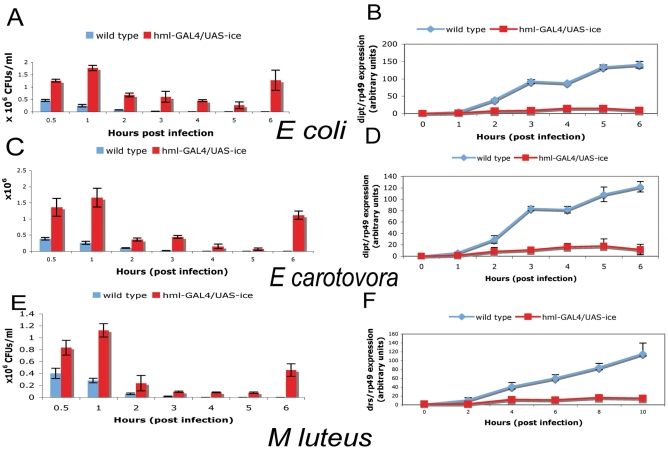Fig. 3.
Bacterial persistence versus AMP gene induction in haemocyte-ablated larvae following septic injury. (A,C,E) Proliferation at various times post-infection. In wild-type larvae, bacteria were eliminated within the first hour of infection for E. coli (A) and Ecc (C) or within 2 hours for M. luteus (E). By contrast, haemocyte-depleted larvae failed to efficiently eliminate the bacteria. Although CFUs were reduced within 5 hours post-infection, bacterial proliferation resumed and reached the initial load at the end of the time course (compare blue and red columns in A, C and E at 0.5 and 6 hours post-infection). (B,D,F) Activation of dipt or drs at various times post-infection. Proliferation correlated with a poor activation of dipt (B,D) or drs (F) following infection in haemocyte-ablated larvae (monitored by quantitative real-time PCR). Values in all graphs are mean values ± s.d. of at least three independent experiments. Experiments were done in whole larvae.

